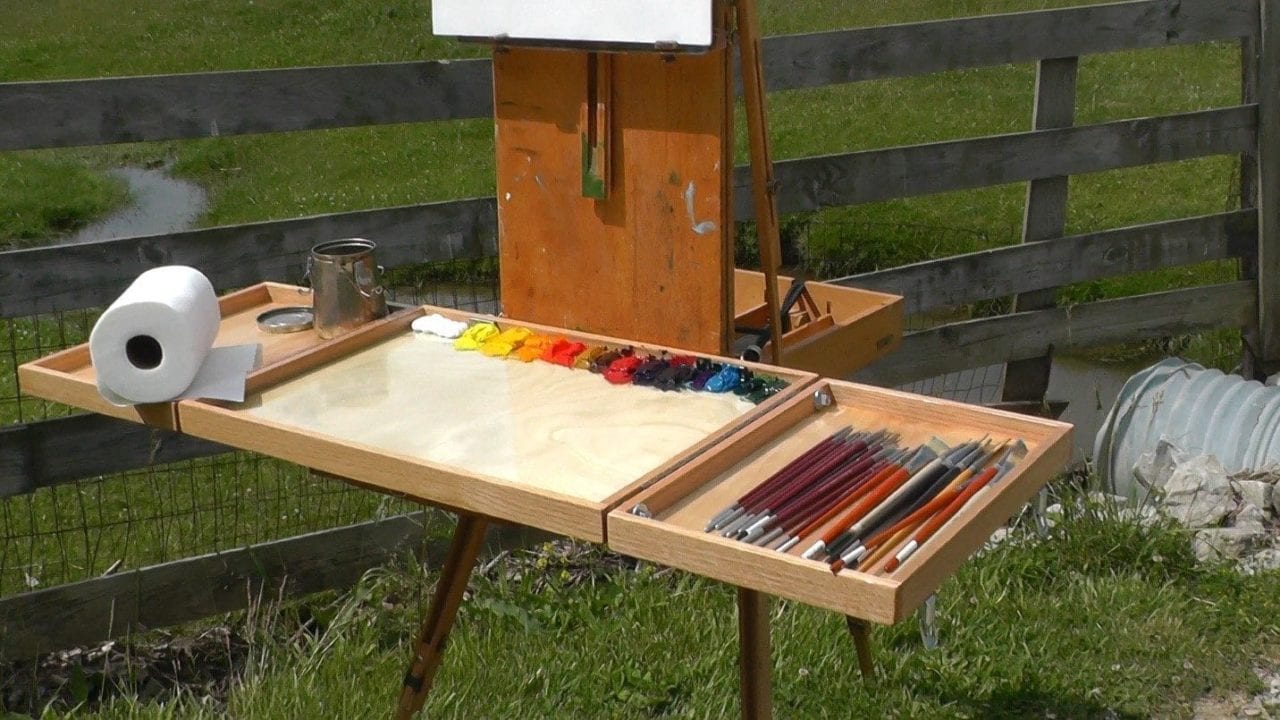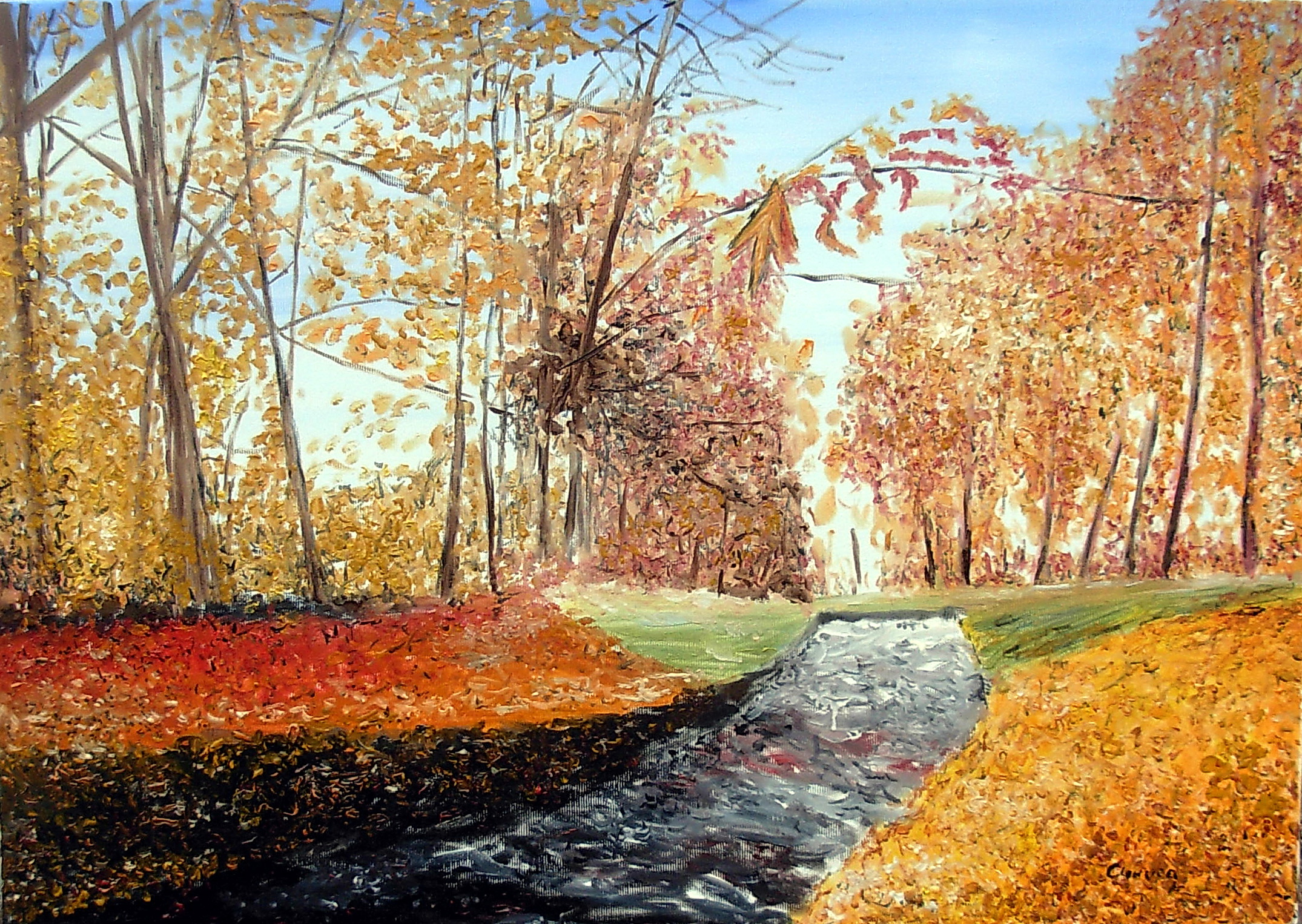Plein-air painting is a timeless tradition that has been enjoyed by both professional and amateur artists alike for centuries. This type of painting allows you to capture the beauty of nature in a unique and personal way, as you work in the open air with the changing light and weather conditions. It is a great way to develop your painting skills, as well as to appreciate the beauty of the outdoors. In this guide, Brooklyn-based artist Albert Serino will discuss the basics of plein-air painting, including the materials and techniques you need to get started. We will also provide tips and advice on how to make the most of your plein-air painting experience, so that you can create beautiful pieces of art that accurately reflect the beauty of nature.

What is plein-air painting?
Plein-air painting is the act of painting outdoors, or in other words, “in the open air”. This is the core concept of plein-air painting, but there are other important factors to consider, such as the type of paint you choose and the paints’ suitability for outdoor painting. When you paint outside, there are many things that can impact the outcome of your painting, such as weather conditions, the time of day, and the colors in front of you. Plein-air painting is also known as “painting en plein air” in French, which translates to “painting in the open air”.
Benefits of plein-air painting
There are many benefits of plein-air painting, including the fact that it challenges you to work with changing weather and light conditions, which is a great way to learn how to be more flexible in your painting. It also provides a unique experience that is impossible to replicate when painting indoors. When painting outside, landscape painter Al Serino is inspired by the beauty of the natural world and be able to create unique pieces of art that reflect the beauty around you.
Materials needed for plein-air painting
The materials needed for plein-air painting depend on the type of paints you choose to use, as well as the type of painting surface and brushes. For paints, watercolors are a popular choice for plein-air painting, as they are easy to transport and do not require any additional chemicals or equipment. Oil paints, acrylic paints, and gouache are also suitable for plein-air painting, but they require the use of a paint palette and painting surface. For a painting surface, you can choose a board or canvas, depending on your desired finish. Brushes are another important aspect of plein-air painting, as they have a huge impact on your final piece. Brushes come in a variety of sizes and shapes, each of which is better suited for specific applications. For plein-air painting, you need a brush that is easy to clean, has a handle that is easy to hold, and has bristles that are suitable for the type of paint you choose to use. You also need a palette, paint jars, and paper towels, and a travel bag to store all of your materials while you are on the go.
Techniques for plein-air painting
There are many different techniques for plein-air painting, depending on the paints you choose to use. When using watercolors, you can either work wet-in-wet or wet-on-dry, which refers to the cleanliness of the paper. You are likely to get the best results when working wet-on-dry, as this will allow you to blend the colors on the paper with a paper towel. Similarly, Al Serino adds, dry-on-dry is also a good technique for watercolors, but you need to be careful not to overwork the paper. You can use either oils or acrylics for your painting, with oils being particularly suited for landscapes. You can work either on the surface or in layers, with the latter being a good option for creating an overall composition. For gouache, a mixture of watercolors and acrylics will work well. You can work directly on the surface or create a sketch first, either on paper or directly on the surface. When it comes to applying paint, you can use a variety of different tools, such as a paint roller, palettes, and stencils.
Tips for choosing a painting location
When choosing a painting location, it is important to consider the time of day, weather conditions, and the colors that are in front of you. The time of day will affect the light and shadows in front of you, so it is important to choose a time that will offer you the best light. Similarly, the weather conditions will also have an impact on your painting, so you need to make sure that you choose a location that is suitable for the weather forecast. When it comes to the colors that are in front of you, you should try to find a location that has strong and vibrant colors, such as a field of wildflowers. As Al Serino explains, it is important to note that the colors in your painting will change as the day progresses, so it is important to find a location that has consistent colors throughout the day. You can use tools such as websites or apps to help you find a good location.
Techniques for capturing changing light and weather conditions
When painting outdoors, you will inevitably have to deal with changing weather conditions, as well as the ever-changing light throughout the day. This presents an opportunity to work with the light and weather conditions in front of you to create a unique painting, as well as a challenge that can only be experienced while painting outdoors. When working with changing light, you can either choose to paint “en plein air” or “en plein air “en couchant”, which translates to “in full daylight” and “in full daylight at sunset” respectively. When painting “en couchant”, you can capture the light just before sunset, which will result in a painting that has a warm and golden glow. When working with changing weather conditions, you can either choose to paint “en plein air”, or “en plein air “en couchant”. When painting “en plein air”, you will be able to see and capture the clouds as they approach and pass over you, as well as the rain or snow that falls from the sky. When painting “en plein air “en couchant”, you can capture the fading light of the day, as well as the clouds and weather conditions that are prevalent at that time.
Tips for working with changing conditions
When painting outdoors, you will inevitably come across different conditions and challenges that you need to overcome. During your painting session, you may come across strong sunlight, strong winds, or even rain or snow, and you need to be prepared to deal with these challenges. Strong sunlight can easily reflect off your painting surface, so it is important to find a painting location that offers shade or an trees or bushes that can provide some shade. Strong winds can also affect your painting, as they can move your tools and paint, so it is important to find a location that is protected from the wind. Similarly, rain and snow can also be challenging when painting outdoors, as they can ruin your painting surface and make it difficult to paint. When painting in the rain or snow, Al Serino recommends to make sure that you have a waterproof painting surface, as well as a brush that can withstand water.
How to properly store and transport materials
When storing and transporting your materials, it is important to make sure that they are properly protected from the elements, as well as from pests and other potential hazards. When storing your paint jars, it is a good idea to keep them in a dark, cool place, as well as in a container that is airtight and moisture-free. When it comes to storing your brushes, you should always clean them thoroughly after each painting session, and allow them to dry before storing them. Finally, when it comes to transporting your painting materials, you need to make sure that they are properly protected from the elements, such as water and UV light. A bag or case made of water-resistant material that has a tight seal is ideal for this purpose, as well as a bag or case that can easily be carried.
